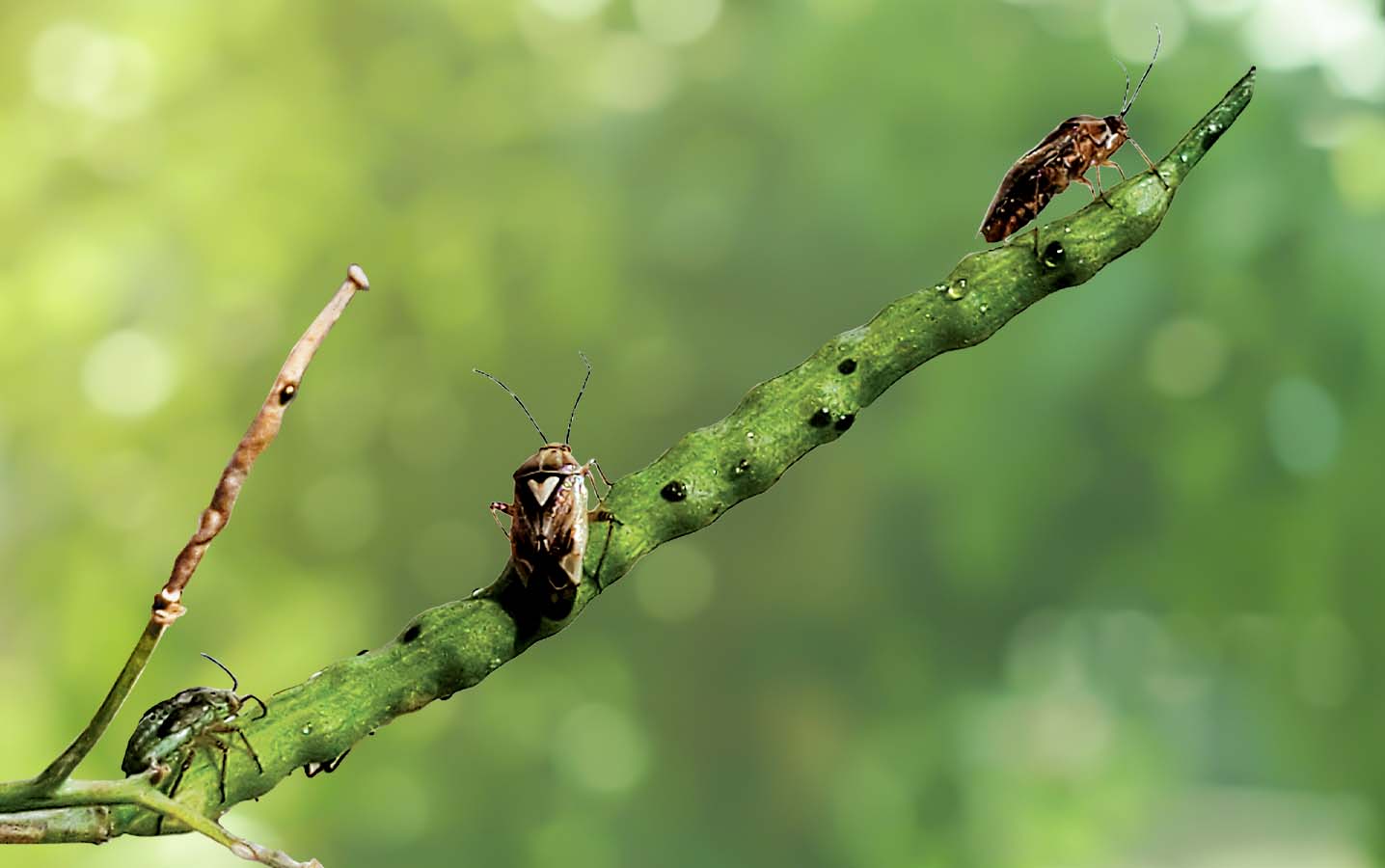What did we learn from the Lygus Apocalypse?
AAFC research scientists Héctor Cárcamo uses the term “Lygus Apocalypse” to describe the scene in some Alberta fields in 2021. The experience with this insect provided a good test for management recommendations.
Héctor Cárcamo titled his Alberta Agronomy Update 2022 presentation “What did we learn from the lygus apocalypse?” To answer his own question, the research scientist with Agriculture and Agri-Food Canada (AAFC) in Lethbridge, considered lygus biology, current knowledge of lygus’s interaction with canola and the unique conditions of the 2021 growing season.
Lygus bugs (which belong to the plant bugs, or Miridae family) feed on a variety of commercial crops, including canola, alfalfa, flax, hemp, sunflowers and quinoa. After overwintering as adults, lygus bugs lay eggs that produce the first generation of nymphs around June. (Research near Lethbridge found that a second generation later in the season is possible, especially for regions with longer growing seasons.)
Heat speeds lygus growth.
Heat units, such as growing degree days (GDD), will impact the pace of lygus development. For example, Lygus keltoni species usually progress from first to fourth instar nymphs in 110 GDD (base 10°C). Therefore, many days with high temperatures in 2021 allowed lygus bugs to develop quicker than in previous years, which allowed the late-instar nymphs to align with the canola growth stage most vulnerable to lygus feeding – which is early pod stage. Hot weather also complicated lygus control measures, as many of the chemical options are not recommended for very high temperatures and/or when plants are under extreme drought stress.
Lygus bugs (which belong to the plant bugs, or Miridae family) feed on a variety of commercial crops, including canola, alfalfa, flax, hemp, sunflowers and quinoa.
Stick to new thresholds.
According to three field trials sites in Alberta and one in Saskatchewan, Cárcamo reported canola yield reductions of about four bu./ac. when lygus counts were well in excess of three per sweep at early flower or pod stage. The findings from this limited dataset led Cárcamo to consider if, under the 2021 growing season conditions, the action threshold was actually greater than three lygus per sweep rather than the current threshold of two to three per sweep. Cárcamo verified the “two to three per sweep” threshold in his recent ‘Validation of lygus and other insect pest thresholds in commercial farms throughout the Prairie Provinces’ study.
Some feeding is good (in a way).
Interestingly, results from a 2021 large plot study near Saskatoon (by AAFC’s Tyler Wist) also supported a previous finding that counts of fewer than one lygus per sweep may actually stimulate yield, as Cárcamo also documented.
Don’t spray too early.
Cárcamo concluded in a previous study that applications for lygus at the bud stage of canola are not usually effective. In canola fields sprayed at early flower stage for cabbage seedpod weevil (CSPW) control, the study still reported a high abundance of lygus by the time the canola reached the mid pod stage. The 2021 experience supported this observation. (See sidebar for more information.)
Finally, Cárcamo emphasized that since insects have a lot of farm-tofarm variability, agronomists and farmers could use on-farm testing to build a long-term quantitative H BY TARYN DICKSON AAFC research scientist Héctor Cárcamo uses the term “lygus apocalypse” to describe the scene in some Alberta fields in 2021. The experience with this insect provided a good test for management recommendations. Lygus bugs (which belong to the plant bugs, or Miridae family) feed on a variety of commercial crops, including canola, alfalfa, flax, hemp, sunflowers and quinoa. Credit: Keith Gabert CANOLA RESEARCH HUB What did we learn from the lygus historical record of crop injury in relation to biotic stress and input efficacy. This will help everyone better understand lygus and improve management decisions. This approach should also work for other pests, including diseases.
Read more about Cárcamo’s research and other lygus bug studies on the Canola Research Hub at CanolaResearch.ca.
Management Tips
Management for Lygus and Cabbage Seedpod Weevil
Héctor Cárcamo’s study “Management of lygus bugs and seedpod weevil in canola at the farm level” (which can be found at CanolaResearch.ca) recommends:
- Start scouting canola for cabbage seedpod weevils (CSPW) and lygus bug at late bud stage. Make decisions based on thorough field monitoring (not based on neighbouring fields or weather conditions). Sample at least four spots in the field, 50 metres away from the edge.
- Make spray decisions based on thresholds and proper timing for each pest.
- are below threshold in an attempt to reduce pod-stage lygus bug numbers. Not spraying will conserve natural enemies (which feed on lygus) and allow factors such as rainfall to contribute to the control of pest insects.
- Sweep for lygus bugs after a heavy rainfall before making a spraying decision.
- Avoid tank mixing insecticide with fungicide sprays done at full flower. This can be harmful to pollinators and natural enemies.





